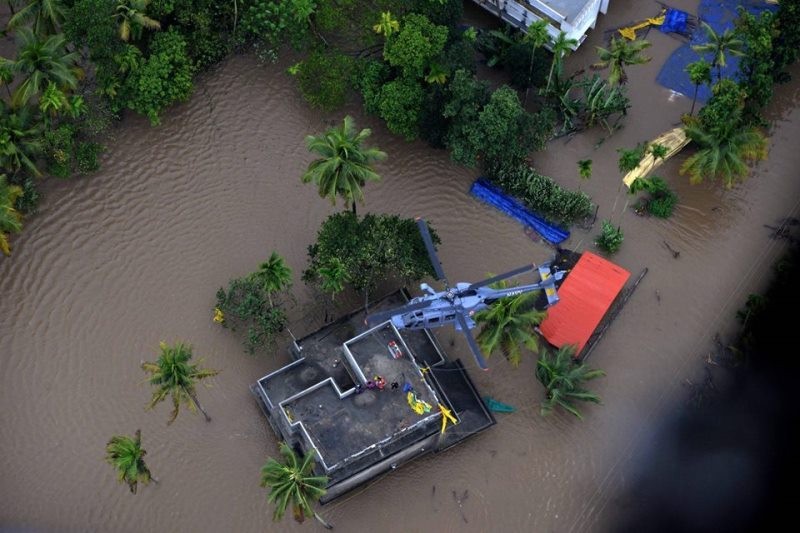 Climate Change
A scene of airlifting of people by Indian Airforce in Kerala during the 2018 floods (IAF Image)
Climate Change
A scene of airlifting of people by Indian Airforce in Kerala during the 2018 floods (IAF Image)
Floods of Fury Crush Tourism Earners in India and Pakistan
Fatalism and hope hang heavy in the air as Pakistan and India battle nature’s fury dealing a big blow to the small-scale earners in the tourism industry. Iffat Hasan Rizvi, K Rajendran and Sai Manish report from the two sides of the border
There is little that Jehangir Malik and Jose Dominic, two enterprising men running their hospitality ventures, could have in common.
Malik ran his now devastated hotel business in Pakistan’s enchantingly beautiful Swat Valley in the remote Khyber Pakhtunkhwa province. Dominic runs his resort in the Southern Indian state of Kerala, called ‘God’s own country’ for its stunning landscape.
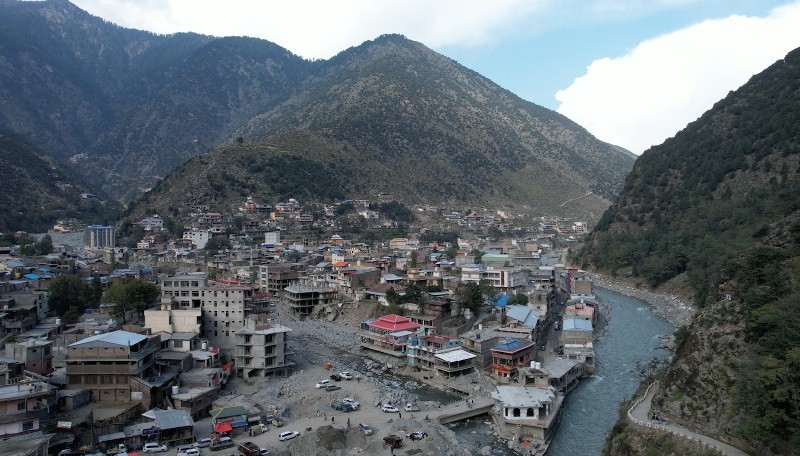 Aerial view of Swat after floods abatedAerial view of Swat after floods abated
Aerial view of Swat after floods abatedAerial view of Swat after floods abated
Both men would perhaps be unaware that the geographical paradises they inhabit even exist on the world map. But tragedies have a way of drawing out commonalities across borders, even ones as hostile as that between India and Pakistan.
Both tourist hubs sustain small and medium scale hospitality entrepreneurs who run everything from roadside stalls, houseboats, trout farms, wayside food joints, lodges and camps.
Insurance to protect them is virtually absent. Many are already indebted to banks and are forced into the loan cycle again to rebuild their livelihoods pushing them into a crushing debt trap. And as official documents point out, both Swat and Kerala are rife with examples of blatant violations of building laws and environmental rules that exacerbated the mass flooding.
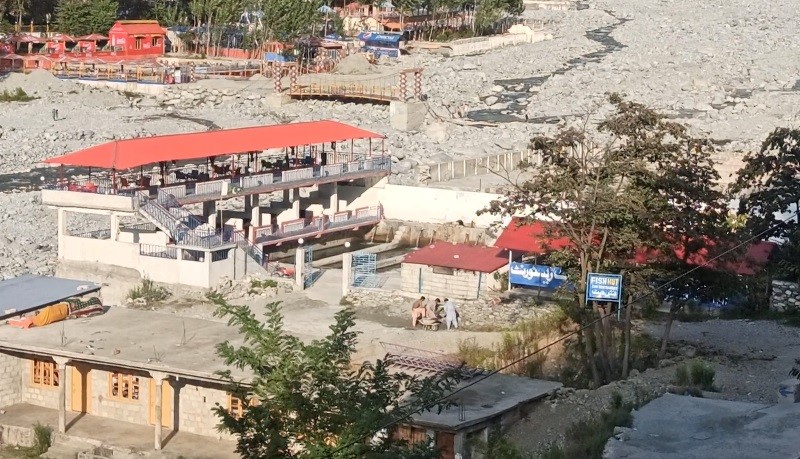 Hotels that were built flouting rules in the proximity of the river seen standing on the river bank after the flood waters abatedHotels that were built flouting rules in the proximity of the river seen standing on the river bank after the flood waters abated
Hotels that were built flouting rules in the proximity of the river seen standing on the river bank after the flood waters abatedHotels that were built flouting rules in the proximity of the river seen standing on the river bank after the flood waters abated
In August 2022, Pakistan was devastated by unprecedented floods, with tourist hotspots like Swat wrecked by cataclysmic deluges which turned the pristine trout teeming waters of the Swat river that snakes through this remote valley into a raging detritus laden torrent that smashed into homes and hotels on its banks, swallowing many in its fury and leaving a trail of unbridled destruction. Malik’s livelihood was one of the many snuffed out in the mayhem that unfolded over several days in Swat.
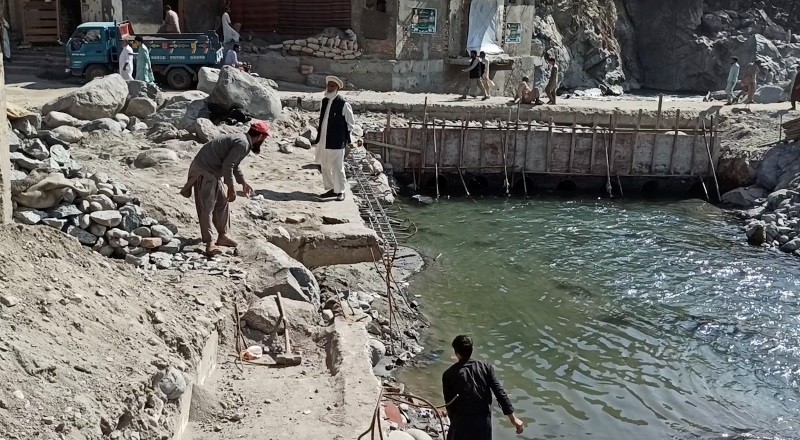 Locals survey the damage in the wake of floods in SwatLocals survey the damage in the wake of floods in Swat
Locals survey the damage in the wake of floods in SwatLocals survey the damage in the wake of floods in Swat
Standing on the banks of the river, Malik points to piles of debris; steel rods jutting out, bare pillars and collapsed roofs of what was once the famed Kohistan Hotel owned by him. Walking further down the wreckage dotted river bank Malik points out, “Here used to be Iqbal Hotel. It was a favourite of tourists coming from Punjab. Along with this, there was Quetta Tea Café. Next to it was the Driver hotel.”
As he plays guide showing the destruction around, mentally reconstructing the ruins of what once were places bustling with tourists and people dependent on them for their livelihoods, becomes a rather painful exercise.
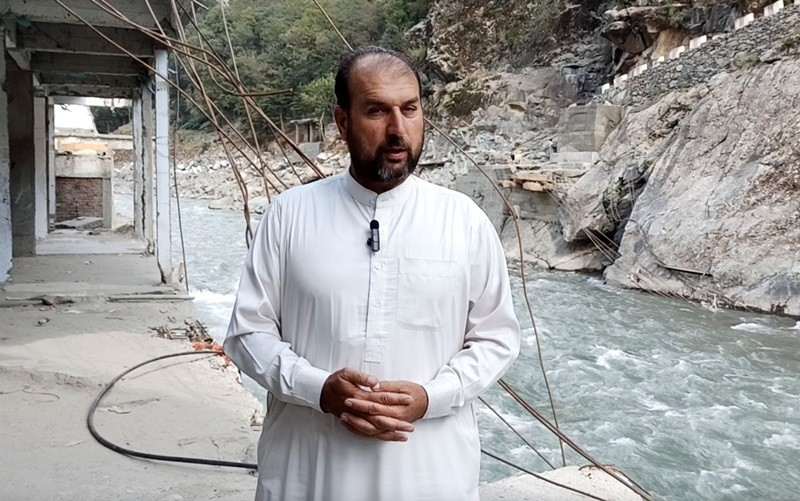 Jahangir Malik whose hotel was destroyed is waiting for the government to rebuild infrastructure as he plans the re-construction of his own hotelJahangir Malik whose hotel was destroyed is waiting for the government to rebuild infrastructure as he plans the re-construction of his own hotel.
Jahangir Malik whose hotel was destroyed is waiting for the government to rebuild infrastructure as he plans the re-construction of his own hotelJahangir Malik whose hotel was destroyed is waiting for the government to rebuild infrastructure as he plans the re-construction of his own hotel.
What will be more arduous is physically rebuilding all that was lost. Nothing Malik owned now remains. His lavish hotel is gone. A fine dining restaurant and a small tea stall he owned were swept away. The stoicism that was visible on his face is replaced by hints of apprehension as he is asked about the future.
He says, “We will think about reconstructing our business when the government restores roads and bridges across Swat. The architect will come and estimate the loss of our business and building cost, but no one can evaluate the loss suffered by the lower-level staff. Each small restaurant had at least 10 to 15 employees. The larger hotels had many more. There is no work in this town anymore for them.”
Sajjad, with the face of a man barely out of his teens and a mop of windswept hair, is one of them. On August 26, the waiter who used to serve tea at a local restaurant, saw his life come crashing down. Earning a salary of Rs 20,000 (USD 90) a month and a few extra rupees in tips for work that often stretched from sunrise till midnight, Sajjad spent an uneasy night after returning from work on August 25.
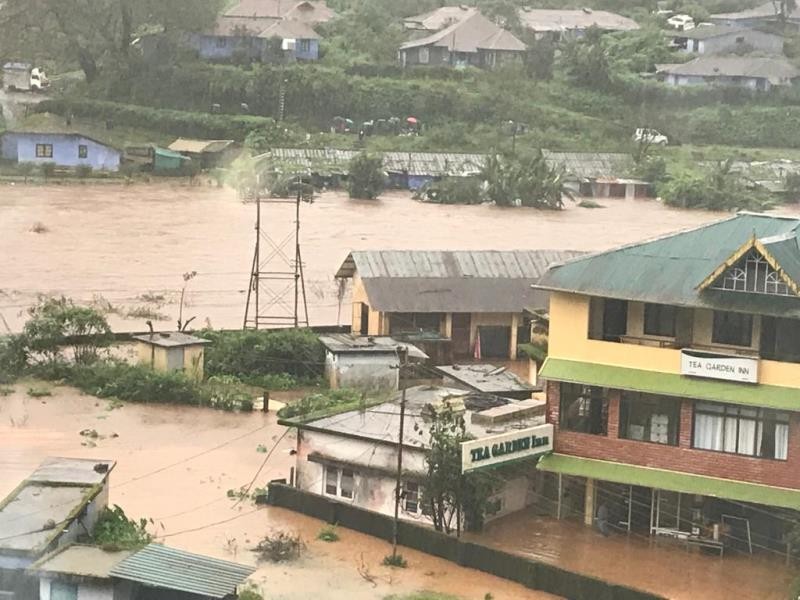 Munnar in Kerala flooded in 2018 floodMunnar in Kerala flooded in 2018 flood
Munnar in Kerala flooded in 2018 floodMunnar in Kerala flooded in 2018 flood
Sajjad who worked as a waiter at a restaurant has been left jobless as Swat struggles to rebuild its damaged hospitality infrastructure
“I was hopeful that the flood would pass by daybreak. I returned to work as usual the next morning and saw my workplace being swept away before my own eyes. My father and two brothers also lost their jobs. Now I go to the city everyday looking for work. On most days I return home empty handed” says Sajjad.
While the Pakistan government is still assessing the extent of the damage, local officials in Swat confirmed that close to 2,500 people were employed in restaurants and multi storied hotels in Swat alone.
Some 2000 miles away from devastated Swat and across the Arabian Sea in the lush green mountains of the Western Ghats is Kerala –– where the fates of Malik and Dominic find a semblance of commonality.
In 2018, Kerala, like Swat, Dominic saw one the worst flooding in history. Dominic, who runs a high-end resort named Spice Village in the district of Idukki, Kerala was on the tenterhooks. Idukki was the worst affected district of Kerala in the floods. As record breaking rains pounded the hilly district, all sluice gates of the Idukki dam were opened to prevent its imminent collapse. Across the district roads caved in, bridges were washed away, entire mountain sides that had been exploited by resort owners and loggers collapsed further destroying roads. For several days Idukki was completely severed from the rest of India.
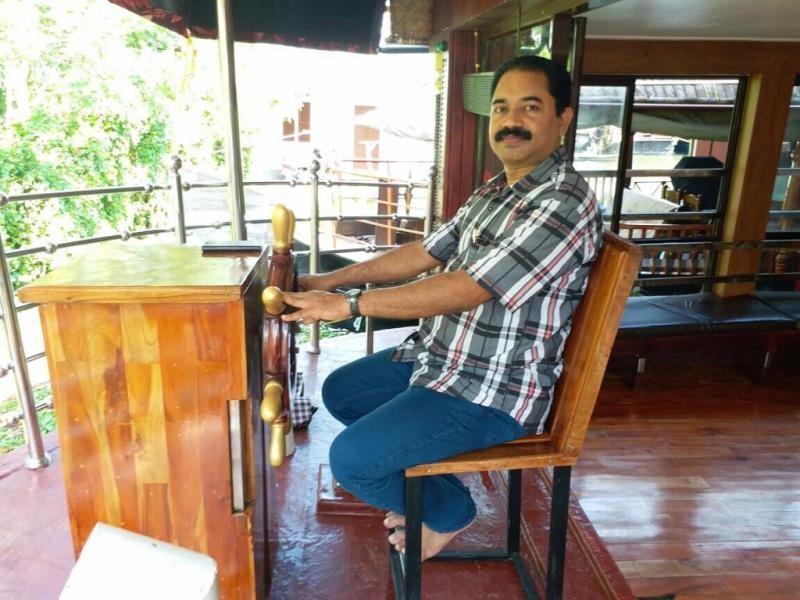 Jose Arathupally defaulted on loans taken for his house boat after tourism collapsed in Kerala following the 2018 floods.
Jose Arathupally defaulted on loans taken for his house boat after tourism collapsed in Kerala following the 2018 floods.
Amidst this mayhem, Spice Village miraculously remained untouched by flood waters that had swamped the areas around it. In the isolated island that Idukki had become after being cut-off from the Indian mainland, Spice Village became an island within it.
“All roads around us were gone. There was no way to get out or reach this resort. For three months, there was no connectivity and no tourist inflow. It took six months for things to return to normal. It was only because of the post-Onam (a festival of Kerala) rush till the last few months of 2018 that we were able to recover losses incurred during the floods,” said Dominic.
In wars and natural disasters, images of human deaths and annihilation of infrastructure serve as barometers for gauging the intensity of misery. The nuances of livelihood losses and ensuing economic misery of those whose despair is not evidently visible is what often hurts more.
Destroyed hotels and empty resorts in the aftermath of the Swat and Kerala disasters do tell a story. But there are layers of suffering beneath that evident trauma.
Back in Swat, Usman Ali and Amin Ullah, two trout fish farmers are testament to that. The wisdom goes that if the hotel industry in Swat relies on tourism to keep cash registers ringing, tourism itself depends on trout to keep itself running. It would be an aberration for a tourist to leave Swat without tasting its trout. Considered one of the finest in the world, the virginal glacial waters of the Swat River are harnessed by many locals to breed these fishes on small scale trout farms. These farmers send them to star hotels across Pakistan and were even drawing up plans to export it to high value global markets.
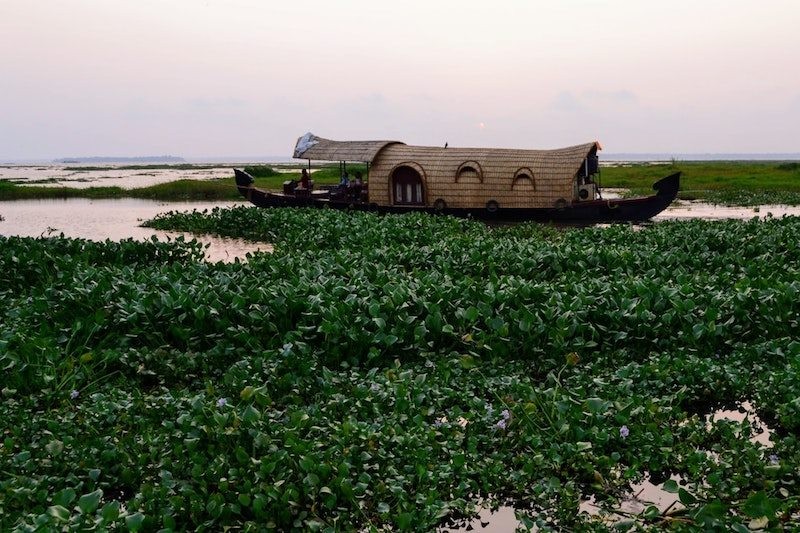 Kerala is a magnet of tourists. Image: Kunal Kalra/UnsplashKerala is a magnet of tourists. Image: Kunal Kalra/Unsplash
Kerala is a magnet of tourists. Image: Kunal Kalra/UnsplashKerala is a magnet of tourists. Image: Kunal Kalra/Unsplash
Usman Ali was one of those. Ali says, "We had seven trout farms, which had thousands of kilos of trout fish. Everything is gone with the flood.”
Further down Ali’s farm is that of Amin Ullah, a small-scale farmer. He says, “My trout fish farm was located at the bank of Swat River, there were 20 big ponds in that farm which contained about 30,000 kilograms of trout fish. The whole farm was washed away in the flood.”
Ali adds, “We will sell our land, take loans from private individuals and banks and rebuild the same farm.”
Underlying Ali and Amin Ullah’s attempts to rebuild their livelihoods are two key economic factors that determine how strongly small entrepreneurs in this industry are able to survive the setbacks: credit and insurance.
A 2021 report from the Boston Consulting Group, a US based think tank, estimated that 40 per cent of the USD 600 billion credit demand by micro, small and medium enterprises (MSMEs) in India was met by informal sources. Smaller entrepreneurs whose credit worthiness can be problematic for banks rely on these informal sources. Banks show little leniency to those who have been struck by disasters and even when all is gone, there is no option but to keep paying back the principal and the interest.
Jose Arathumpally, a houseboat owner in Kerala found himself in this trap after the 2018 floods in Kerala. Like Ali and Amin Ullah whose fishes were washed away in the floods without leaving any trail of destruction, Jose’s losses weren’t visible to the human eye.
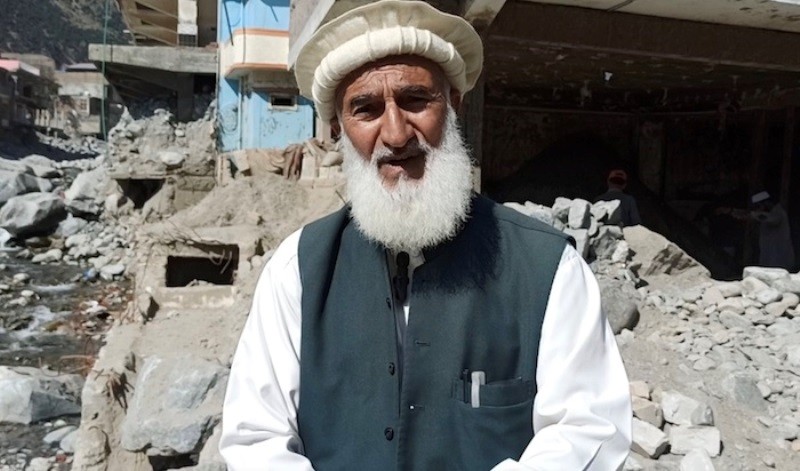 Hotel owner Meraj ud din in Swat
Hotel owner Meraj ud din in Swat
Jose operates two houseboats in Alappuzha – a picture perfect paradise of idyllic backwaters before dramatically draining into the Arabian Sea. In 2018, much of Alappuzha was under water with little distinction between the backwaters and the landmass. With everything submerged, houseboats were the safest place to be with some even transforming into shelter homes for people. “As tourism collapsed, I lost all sources of income. I was unable to pay the equated monthly instalments (EMI) on my loan of Rs 4.5 million (USD 0.5 million). The bank sent notices to attach my houseboats. I was mentally destroyed,” says Jose. He eventually picked up the pieces and started cultivating vegetables on his houseboats to stay sane and supplement his income.
The second key economic determinant of an entrepreneur’s ability to resurrect their fortunes post-disaster is insurance. Property and business insurance in the hospitality sector is the preserve of big players and confined to metropolitan cities. In areas like Swat or for that matter most areas of Kerala, property insurance is unheard of.
In India, the government provides insurance to farmers (a critical vote bank) and medical insurance to the most economically vulnerable. But the poor often find themselves without any cover after a natural disaster.
In 2020, the National Institute of Disaster Management in India set up a task force to examine the issue, the group submitted its report in December that year.
As a solution it proposed adopting the insurance model used by the United Kingdom (UK). Called the parametric index based solution, it provides a set insurance payout to every targeted poor household depending on the intensity of the calamity. The higher the natural calamity the higher the insurance payout.
It noted, “An insurance model can be used to offer protection for the low-income group in case of natural disaster for loss of livelihood and loss of assets. The quality of their housing, the nature of their livelihood (daily wages) and access to financial risk mitigation tools is significantly inferior as compared to the middle- and higher-income group who have access to privately purchased insurance covers, better savings and a consistent income source that enables them to withstand natural disasters and re-organize their life post such events.”
This dichotomy becomes evident in Swat and Kerala. As Amin Ullah, the trout fish farmer from Swat says, “This flood came from nowhere. We never thought of taking an insurance policy. There is no concept of insuring your business in Swat.”
Cut to Munnar, Kerala where Babu George, an influential local lawyer and president of the local hotels’ association, owns a high-end resort named Bellmount. In 2018 as Munnar was submerged, his hotel was swamped by slush. Having a high value property and possessing the financial prowess, George had it covered. “My hotel was damaged with furniture and important documents destroyed. Pre-empting natural disasters, I had taken insurance with a state-owned insurance company. We are now urging other hotel owners to take insurance policies.”
In the 2018 floods, 433 people were killed in Kerala with the World Bank pegging the economic losses at INR 300 billion (USD 3.7 billion). In Swat alone, 66 people died during the 2022 floods with Shoukat Ali, the commissioner of Malakand division where Swat is situated, pegging economic losses at PKR 25 billion (USD 115 million). The floods that ravaged not just Swat but almost 10 per cent of Pakistan’s land area according to USAID, has killed 1718 people.
The disaster is estimated to have cost the country over PKR 6 trillion ($28 billion). Khyber Pakhtunkhwa, the province in which Swat is located is estimated to have suffered over half a billion dollars in losses. Like in Kerala in 2018, roads, irrigation channels, small hydel projects, houses, and hotels in Swat have been destroyed on a massive scale.
While wider or even universal insurance could have mitigated the economic impact of many of these losses, the destruction that happened was aided by human factors and bureaucratic oversight.
The curious cases of the famed New Honeymoon Hotel in Swat and the Kerala state run Government College in Munnar exemplify this.
In the 2022 floods, one of the most dramatic footages to appear was that a red walled multi storied building with green sloping roofs surrounded by the swirling waters of the Swat River collapsing like a pack of cards before being swept away by raging torrents.
The building was none other than the New Honeymoon Hotel, one of the hospitality landmarks in Swat. Ironically, the same hotel was destroyed during the 2010 floods. But the owner of the hotel re-built it at the same spot making it a sitting duck if history were to ever repeat itself. And repeat it did with a vengeance.
The Khyber Pakhtunkhwa (KPK) River Protection Act, a legislation enacted in 2002 to regulate construction on the Swat River explicitly prohibits any construction “within 200 feet or within a space within the limits between the banks of the river.”
“The Honeymoon Hotel was built 200 feet away from the river well in accordance with the KPK River Protection Act” said Zahid Khan, the president of the Swat Hotels Association.
So, the law prohibited any construction “within 200 feet.” And hotels like Honeymoon and others built their properties “at 200 feet.” Technically no law broken.
But rivers follow their own laws. The legislation was enacted 20 years ago and the limits were never revised despite clear evidence that global warming was melting glaciers faster and causing more precipitation substantially increasing the volumetric rate flow of the river. A look at hotel listings and locations of resorts on Google Maps show these properties located “at the river” with proximity to the waters being their unique selling point.
Aerial footage of the area after the flood waters receded shows multiple properties standing on the now dry boulder strewn banks of the Swat River.
In Kerala, an event of equal misfortune unfolded at the state government operated Government College. During the 2018 floods, an entire hill behind which the college stood came crashing down on it. The massive landslide buried the college in mud, boulders, and slush. A few months later, the state government declared the building uninhabitable and irreclaimable leaving over 400 students without a campus to graduate from. The Government College was also buried in a landslide in 2005. Like the Honeymoon Hotel in Swat, it was rebuilt at the same spot.
The Rajiv Gandhi Institute of Development Studies, Thiruvananthapuram in a report on 2018 floods stated: “The land-use pattern in Kerala had completely changed due to the reduction in forest land. Encroachments of land and unscientific construction in areas of dams and high ranges increased the damage in the floods.”
In Swat, the issue of illegal constructions along the river came to such a boiling point that none other than Pakistan’s army chief had to weigh in. That the nation’s highest military officer had to send out warnings on an issue that should have been addressed by municipal level bureaucracy spoke volumes of how destruction in Swat was shaping public opinion on the river bank’s exploitation.
The increase in frequency and intensity of natural disasters like those that unfolded in Swat and Kerala and its impact on human lives is the inevitable fate of humankind. It is how people and governments rebuild lives and livelihoods after the mayhem is over that decides their future.
In Kerala, Jose decided to grow vegetables on his houseboat. George decided to push other hotel owners to buy insurance. Dominic converted his luxury resort to run only on solar power by going “off the grid.” The Kerala government, one of India’s most fiscally stressed states, decided to introduce a ‘green tourism’ policy.
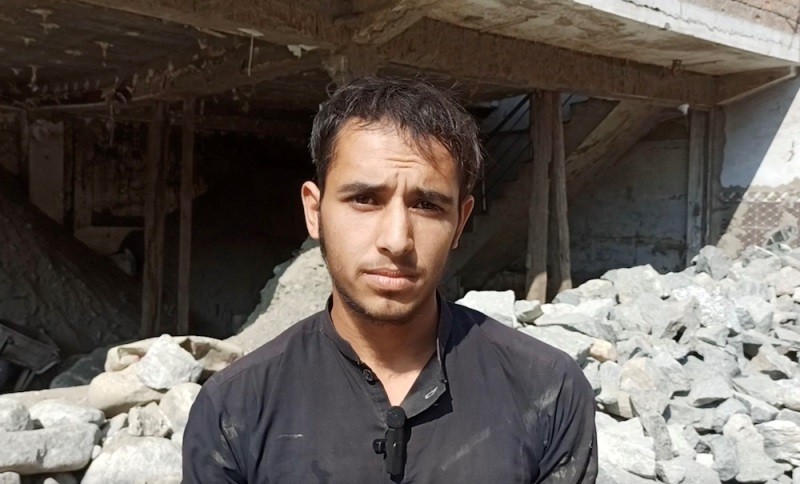 Sajjad who worked as a waiter at a restaurant has been left jobless as Swat struggles to rebuild its damaged hospitality infrastructure
Sajjad who worked as a waiter at a restaurant has been left jobless as Swat struggles to rebuild its damaged hospitality infrastructure
As Pakistan emerges from this historical disaster, the choice of what future it envisages to minimise human sufferings in the wake of these disasters remains to be seen. Meeraj Ud Din, an elderly hotel owner with a flowing beard as white as the glaciers gleaming in the sun in the distance said, “I built my hotel some 55 years ago. It is wrong to blame us for blocking the way of the river. It is the river that ran us over. I believe these floods are a test from Allah.”
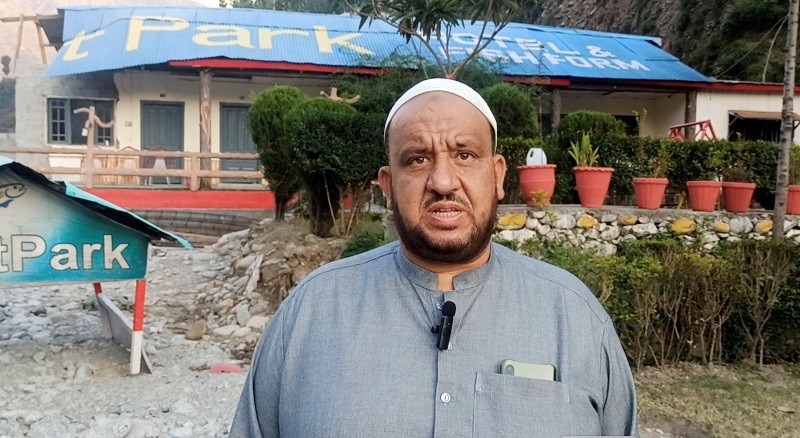 Trout farmer Ameen Ullah Trout farmer Ameen Ullah
Trout farmer Ameen Ullah Trout farmer Ameen Ullah
Jahangir Malik concurs, “In Swat we do not take insurance for calamities. All these are from Allah.”
Dr. Bishal Sitaula, Professor at Department of International Environment and Development Studies at Norwegian University of Life Sciences, Norway says, “Science can only give technical solutions. During floods the community is on its own to deal with the disaster and natural disasters disorient people. At this stage, psychological resilience in the community is more important. South Asian countries do not have fully capable governments or support systems to cope with these kinds of natural disasters and extreme weather events. This is the high time to strengthen communities for resilience thinking towards climate events.”
With fatalism hanging heavy in the post-disaster air of Swat, it could well be time that both India and Pakistan, two nations at high risk of natural disasters, devise ways to be prepared before calamity strikes than react after their most vulnerable populations have lost everything.
(About the authors: Iffat Hassan Rizvi is a Pakistani journalist based in Oslo, Norway. K Rajendran is an Indian journalist based in Kerala. Sai Manish is a journalist based in New Delhi, India. This report is part of a week-long cross-border reporting workshop held in Kathmandu, Nepal, organised by the US based East-West Center.)
Images: By the Authors/ IAF / Unsplash
Top Headlines
-
Environment
From Dust to Life: How Tal Chhapar Became Indias Grassland Revival Blueprint
December 18, 2025
-
Environment
From Nets to Lifelines: The Rising Whale Shark Rescue Movement Across Indias West Coast
November 29, 2025
-
Environment
Indi Setu: Wildlife on the Brink: Can We Rewild a Warming World?
October 25, 2025
-
Environment
SonaSPEED motors power NASAISRO synthetic aperture radar mission
August 01, 2025
-
Environment
How green is my city
July 01, 2025
-
Environment
India's River Dolphin: Clear And Present Danger
May 28, 2025
-
Environment
South Kashmir The costs of coexisting with predatory wildlife
May 12, 2025
-
Environment
Sariska Tiger Reserve: A maharani recognised
May 02, 2025
-
Environment
Arunachal Pradesh: Retracing a century-old biodiversity in Siang Valley
April 03, 2025
-
Environment
Toxic air and smog choke Delhi as experts at COP29 in Baku warn how dragging feet on fossil fuel reduction can cause catastrophe
November 19, 2024

